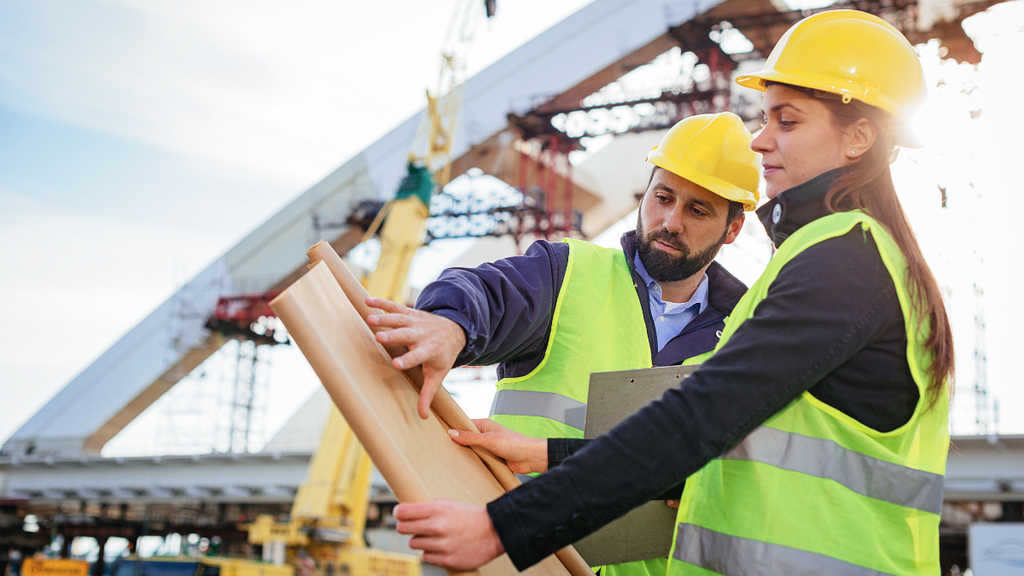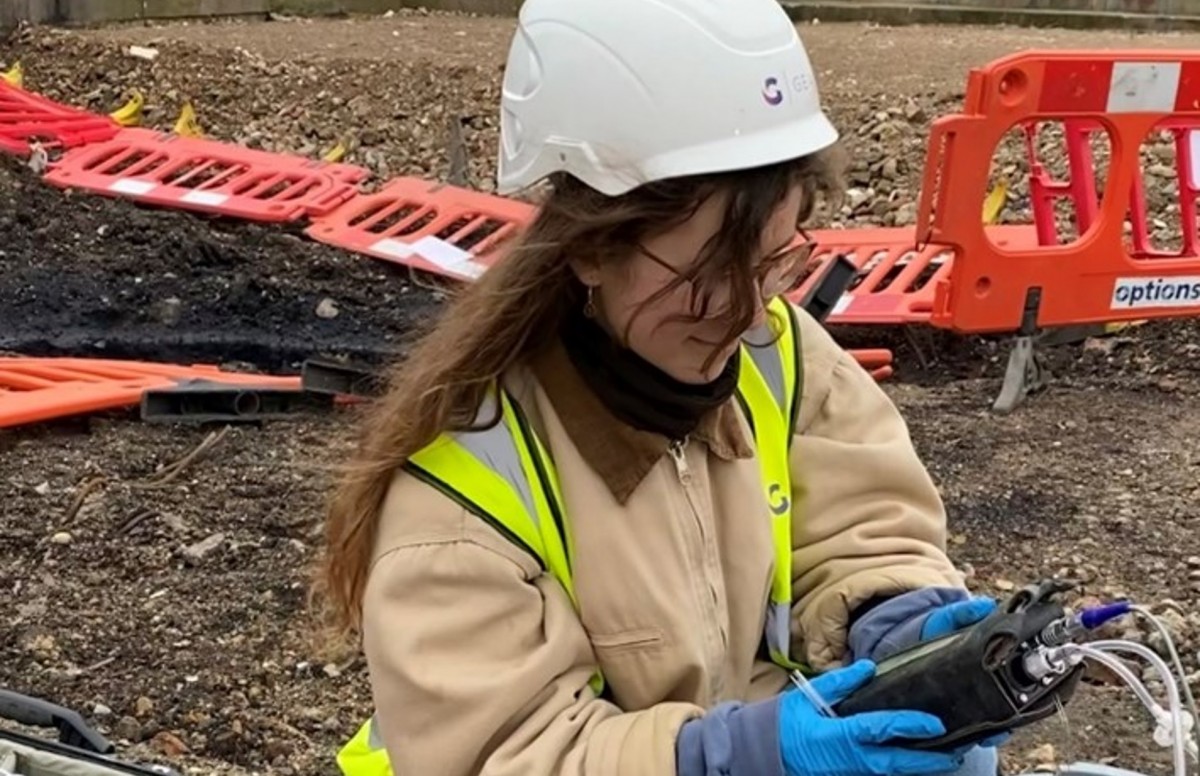Geotheta Fundamentals Explained
Geotheta Fundamentals Explained
Blog Article
Getting The Geotheta To Work
Table of ContentsThe 6-Second Trick For GeothetaGetting The Geotheta To Work8 Easy Facts About Geotheta DescribedThe Ultimate Guide To GeothetaHow Geotheta can Save You Time, Stress, and Money.

They perform website investigations, collect examples, carry out research laboratory tests, and assess data to examine the viability of the ground for construction tasks - Geo Tech Engineer. Based upon their findings, geotechnical designers provide suggestions for structure layout, slope stability, maintaining frameworks, and reduction of geotechnical risks. They team up with various other experts, such as designers, structural designers, and building groups, to guarantee that geotechnical considerations are incorporated into the general job design and application
By evaluating the habits and buildings of soil and rock, they can determine prospective geotechnical hazards such as landslides, dirt negotiation, or slope instability. Their experience aids prevent failures or mishaps that could jeopardize lives and building. Right here are some thorough responsibilities and obligations of a geotechnical designer: Site Investigation: Geotechnical designers conduct website examinations to gather data on subsurface problems.
They interpret the data to comprehend the properties and habits of the soil and rock, including their stamina, leaks in the structure, compaction features, and groundwater problems. Geotechnical Analysis and Design: Geotechnical designers evaluate the information collected throughout website investigations to analyze the stability and suitability of the website for building jobs. They execute geotechnical calculations and modeling to evaluate elements such as bearing capacity, settlement, slope security, side planet stress, and groundwater circulation.
The Greatest Guide To Geotheta
Foundation Design: Geotechnical designers play an essential function in creating foundations that can securely support the desired framework. They evaluate the dirt conditions and load needs to determine the ideal foundation kind, such as shallow foundations (e.g., footings), deep structures (e.g (https://disqus.com/by/geotheta/about/)., heaps), or specialized strategies like soil renovation. They take into consideration factors such as settlement limits, bearing capacity, and soil-structure interaction to create ideal foundation designs
They evaluate construction plans, monitor site tasks, and conduct field examinations to verify that the design referrals are adhered to. If unanticipated geotechnical problems occur, they evaluate the situation and give referrals for remediation or modifications to the style. Risk Evaluation and Reduction: Geotechnical engineers analyze geotechnical hazards and threats associated with the task site, such as landslides, liquefaction, or soil erosion.

Cooperation and Communication: Geotechnical engineers work very closely with various other specialists associated with a task, such as designers, architectural engineers, and construction groups. Effective interaction and partnership are necessary to integrate geotechnical factors to consider right into the general project layout and construction process. Geotechnical designers provide technological know-how, response questions, and guarantee that geotechnical requirements are satisfied.
The Greatest Guide To Geotheta
Right here are some kinds of geotechnical engineers: Structure Designer: Structure engineers concentrate on developing and evaluating structures for frameworks. They assess the dirt problems, load needs, and website characteristics to identify one of the most proper foundation type and style, such as shallow structures, deep structures, or specialized strategies like heap foundations.
They evaluate the aspects affecting incline stability, such as soil buildings, groundwater problems, and incline geometry, and create strategies to prevent slope failures and alleviate dangers. Quake Designer: Quake designers focus on examining and making frameworks to withstand seismic forces. They evaluate the seismic hazard of a website, evaluate soil liquefaction capacity, and establish seismic style criteria to guarantee the security and resilience of frameworks throughout quakes.
They carry out area screening, gather examples, and evaluate the collected information to characterize the soil properties, geologic developments, and groundwater conditions at a website. Geotechnical Instrumentation Engineer: Geotechnical instrumentation designers concentrate on surveillance and measuring the behavior of soil, rock, and structures. They mount and preserve instrumentation systems that check variables such as soil settlement, groundwater degrees, slope activities, and architectural displacements to analyze performance and give early warnings of possible issues.
Geotheta Can Be Fun For Anyone
They perform tests such as triaxial examinations, debt consolidation tests, direct shear tests, and leaks in the structure examinations to collect data for geotechnical evaluation and style. Geosynthetics Designer: Geosynthetics engineers focus on the design and application of geosynthetic materials, such as geotextiles, geogrids, and geomembranes. more info here They make use of these products to boost soil security, reinforce inclines, provide drain options, and control disintegration.
They tend to be investigatory people, which implies they're intellectual, introspective, and curious. They are curious, systematic, reasonable, logical, and logical. Some of them are also social, implying they're kind, generous, cooperative, client, caring, helpful, empathetic, sensible, and friendly - Tailings Engineer.
In the office atmosphere, geotechnical engineers make use of specialized software program devices to do computations, create layouts, and examine data. They prepare reports, testimonial job specs, communicate with clients and staff member, and coordinate task activities. The office setting offers a conducive setting for study, analysis, and collaboration with other specialists associated with the project.
The 9-Minute Rule for Geotheta
They frequently visit job websites to conduct site investigations, analyze geotechnical conditions, and gather information for evaluation. These sees involve taking a trip to different places, in some cases in remote or challenging terrains. Geotechnical engineers might perform soil tasting, conduct tests, and monitor building and construction activities to make sure that the geotechnical aspects of the project are being carried out correctly.
Geotechnical designers also work in specialized geotechnical laboratories. In these centers, they perform experiments, perform tests on dirt and rock examples, and analyze the engineering properties of the materials. Geotechnical lab designers function thoroughly in these settings, managing screening tools, running tools, and videotaping information. They collaborate with other laboratory staff to guarantee precise and trusted screening results.
Report this page